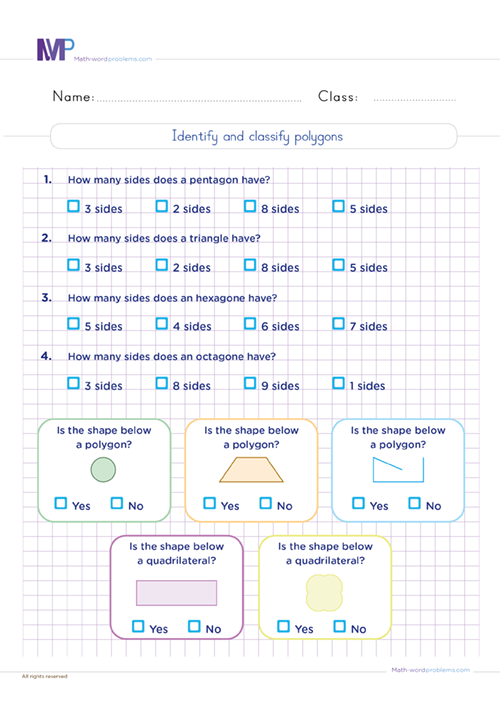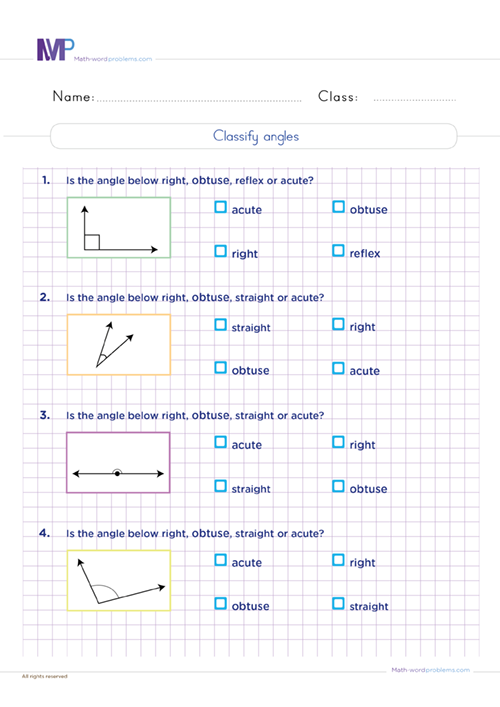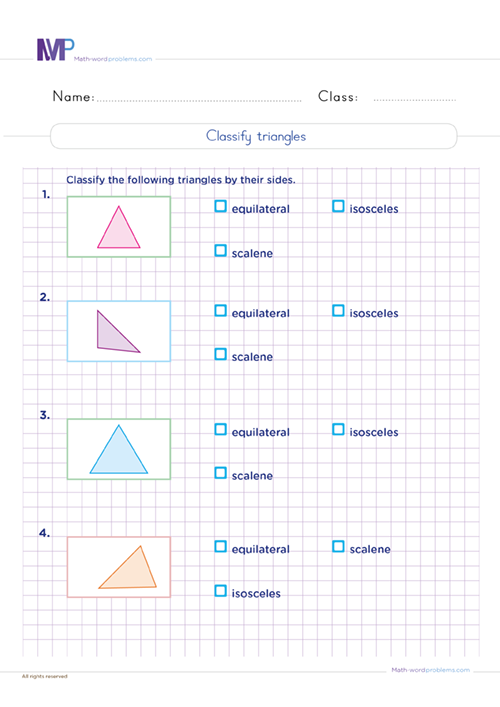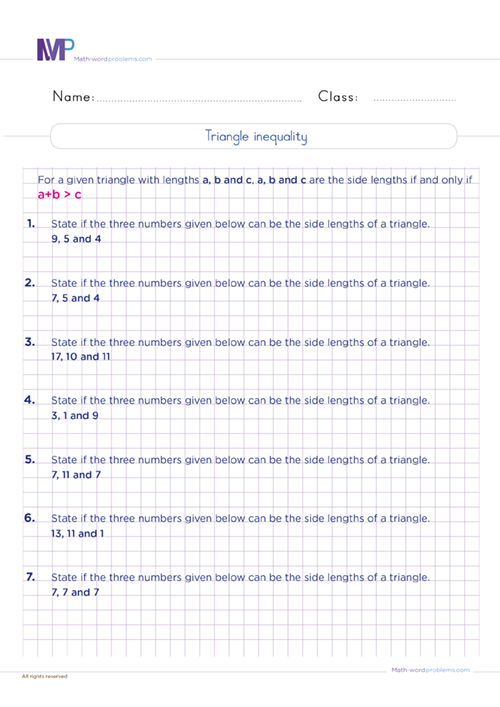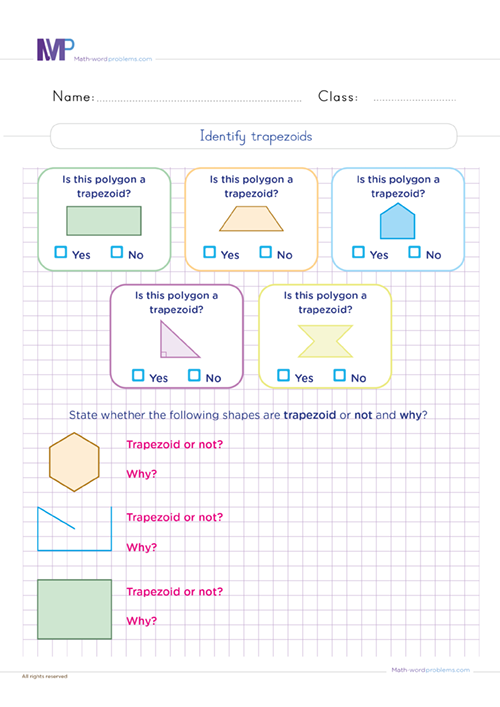 Two dimensional figures worksheets Grade 6
Two dimensional figures worksheets Grade 6

- INTRODUCTION
- Download worksheets
- Related Contents
- What is the importance of two-dimensional figures worksheets...
Get more contents on Two dimensional figures in grade 6...
Encourage your kids to engage in our two-dimensional figures worksheets Grade 6 and have a quick mastery of the types, names, and properties of different 2-D figures. Unlike 3D shapes with 3 dimensions, i.e., the length, width, and height, 2-D shapes have just the length and width and are also called flat shapes. Some of these flat shapes your kids will explore here include; circles, squares, rectangles, rhombuses, parallelograms, trapezoids, kites, pentagons, hexagons, octagons, etc.
It is interesting to note that apart from simply mastering the names of 2D shapes, your kids will learn how to identify and classify polygons and non-polygon objects, using characteristics such as sides, lines, open, closed, types of angles, etc. Thus, this worksheet is great for building vocabulary and familiarizing students with the characteristics and properties of 2d shapes.
Kids have been noticed different types of shapes from an early age but never imagined that they have properties. Hence, we will provide remarkable worksheets and ask kids to identify specific properties of each shape. By so doing, we hope to uplift their understanding of the two-dimensional shapes concept and many other areas of learning.
Classifying two-dimensional figures worksheets Grade 6
Available here are remarkable ways of classifying two-dimensional figures worksheets Grade 6. 6th graders will learn how 2 D shapes can be classified according to polygons and non-polygons. A polygon is any shape with straight lines that do not cross each other and can be drawn on a flat surface. Such shapes include squares, rectangles, triangles, and pentagons but not circles or any other shape that includes a curve. To conveniently work with polygons, we must learn their properties. In this light, our two-dimensional figures worksheets Grade 6 will design several fun activities for identifying and classifying polygons.
Apart from simply identifying polygons, we must know their main properties: the number of sides, angles, and length of a shape's sides.
-
The number of sides of the shape: We classify polygons according to their number of sides. For instance, a triangle has 3 sides; a quadrilateral has 4 sides; a pentagon has 5 sides; a hexagon has 6 sides; a heptagon has 7 sides; an octagon has 8 sides; a nonagon has 9 sides, a decagon has 10 sides, etc.
Moreover, we will explore the types of triangles based on their sides and angles. Note that a triangle is a polygon with three sides and three angles.
-
The angles between the sides of the shape. This angle consists of two rays or line segments meeting at two end points called the vertex. Also, it is the amount of rotation from one ray to the other. We measure angles in degrees using a protractor. Hence, our worksheet will provide instructions on how to use a protractor correctly and accurately. Thus, an excellent resource for reinforcing the skill of measuring angles and improving accuracy.
An acute angle is less than 90°; a right angle is 90°; an obtuse angle is greater than 90° but less than 180°; a straight angle is exactly 180°; a reflex angle is greater than 180°; a full rotation is precisely 360°.
-
The length of the sides of the shape. Our worksheets consist of thrilling shapes for kids to learn how to classify triangles by their side lengths.
-
An equilateral triangle has the same side lengths.
-
A scalene triangle is a triangle where the lengths of all three sides are different
-
An isosceles triangle has two side lengths that are the same and one different side length.
What is the importance of two-dimensional figures worksheets Grade 6 in kid's math and daily lives?
Learning shapes is not all about identifying and organizing visual information. Then, what is the importance of two-dimensional figures worksheets Grade 6 in kid's math and daily lives? As we know, shapes are everywhere in math and our environment.
First, with mastery of 2-D shapes and properties, designers can easily decide what shape or designs to create when constructing houses and buildings. Also, with mastery of different shapes, we tend to understand signs (like road signs) and other symbols.
Secondly, the basis of geometry is formed by mastering the properties of 2-D shapes. With this understanding, we hope to enhance kids' spatial awareness and ability to describe and compare objects.
Above all, our effort in designing this fun resource is to ensure that 6th grader's can effortlessly describe the properties of two-dimensional shapes and identify common 2D shapes by their attributes.

